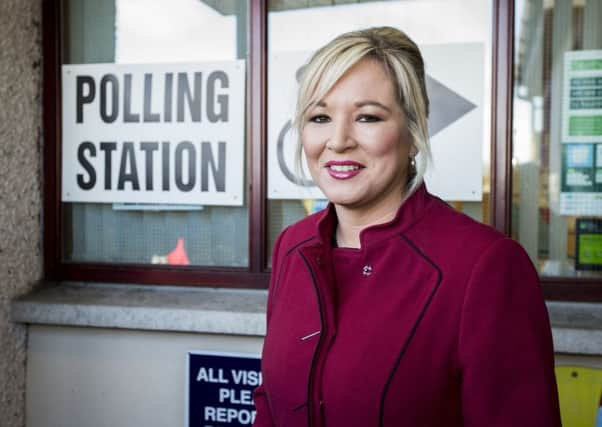Northern Ireland snap vote turnout up '˜markedly'


While the overall turnout figure had not been confirmed by 11.30am, a number of individual constituencies had recorded a rise in excess of 10%.
The turnout is on course to be significantly higher than the 54.91% of 2016 - a demonstration of the level of public interest in the campaign.
Advertisement
Hide AdAdvertisement
Hide AdSoaring viewing figures for the two main TV leaders’ debates had hinted at a surge in voter engagement, something that appears to have been borne out on polling day.
What impact the increased turnout will have on the results will only start to become clear when the first results start to filter through during Friday afternoon.
Some of the 18 constituency counts are set to extend into Saturday.
A total of 228 candidates are vying for the 90 seats in Stormont’s slimmed-down devolved legislature.
The Assembly poll was the second in 10 months.
The last powersharing coalition executive led by the two largest parties at Stormont - the Democratic Unionists and Sinn Fein - collapsed in January, only eight months after last May’s election.
They fell out over the unionist party’s handling of a botched green energy scheme and are also at odds on a host of other issues.
If the former partners in government are again returned as the main players, they will have three weeks to resolve their multiple differences and form a new administration.
The reimposition of direct rule from London is on the cards if the post-election talks fail.
Advertisement
Hide AdAdvertisement
Hide AdThe Ulster Unionists and nationalist Social Democratic and Labour Party (SDLP), which have presented themselves as an alternative partnership, are bidding to wrest control away from the fractious former allies.
The cross-community Alliance Party is also hopeful of a strengthened mandate.
If the three-week post-election deadline passes, Northern Ireland Secretary James Brokenshire is legally obliged to call yet another election.
However, in those circumstances, the Government may pass emergency legislation to suspend devolution for the first time in 10 years ahead of more lengthy negotiations.
While the Assembly ballot will not change how Theresa May’s Government treats talks to leave the European Union, the border between Northern Ireland and the Republic of Ireland is a key Brexit issue.
Five Assembly seats are up for grabs in each constituency, with the overall number returned falling from 108 to 90 as a consequence of the implementation of previously agreed reform measures.
Northern Ireland uses the single transferable vote (STV) proportional representation electoral system.